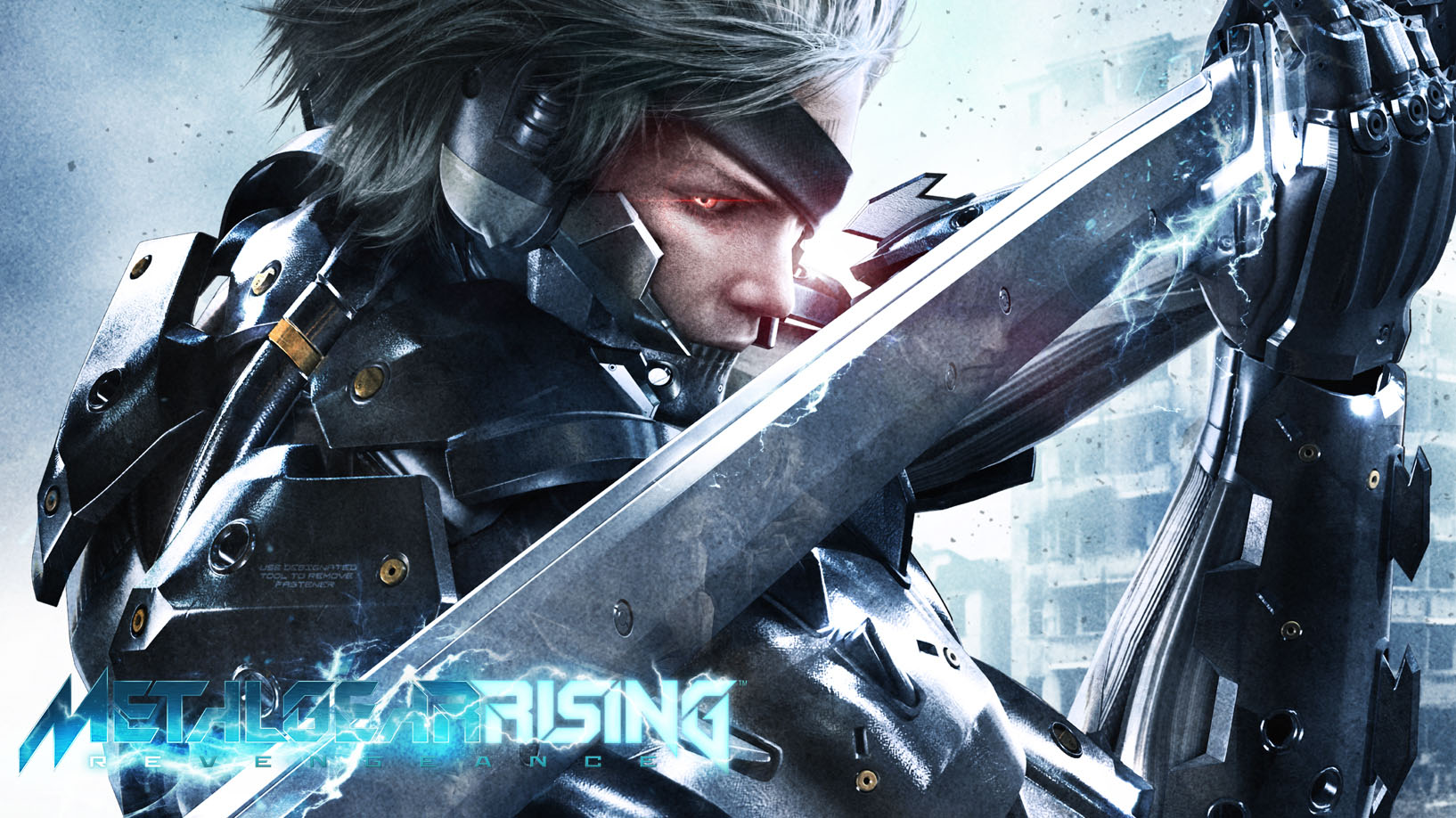
After an extremely rocky development where it almost got canceled, it’s a miracle that Metal Gear Rising: Revengeance is as good as it is at all. This was one of the titles that helped cement PlatinumGames’ reputation as one of, if not the best action game developers around.
How did they do it? Back when it was announced it was still being developed internally at Konami, but due to an inexperienced team with no vision, Kojima championed PlatinumGames to take over development. PlatinumGames had about two years to meet the deadline, and were still in the middle of developing other projects at the same time.
Despite the unbelievable crunch and rushed development, Metal Gear Rising: Revengeance became a beloved classic of the seventh console gen. After all these years, how well has it held up? Despite its troubled development and age, the action is still very solid. It was never a perfect game, even when it was new; but these days the signs of its rushed development are more apparent. Check out this Metal Gear Rising: Revengeance review to learn more!
Metal Gear Rising: Revengeance
Developer: PlatinumGames
Publisher: Konami Digital Entertainment
Platforms: Microsoft Windows, OS X, PlayStation 3, Xbox 360 (reviewed via Series S backward compatibility), Shield Android TV
Release Date: February 19, 2013
Players: 1
Price: $19.99 USD (via Xbox Live Arcade)
Buy Metal Gear Rising: Revengeance on Fanatical (Affiliate)
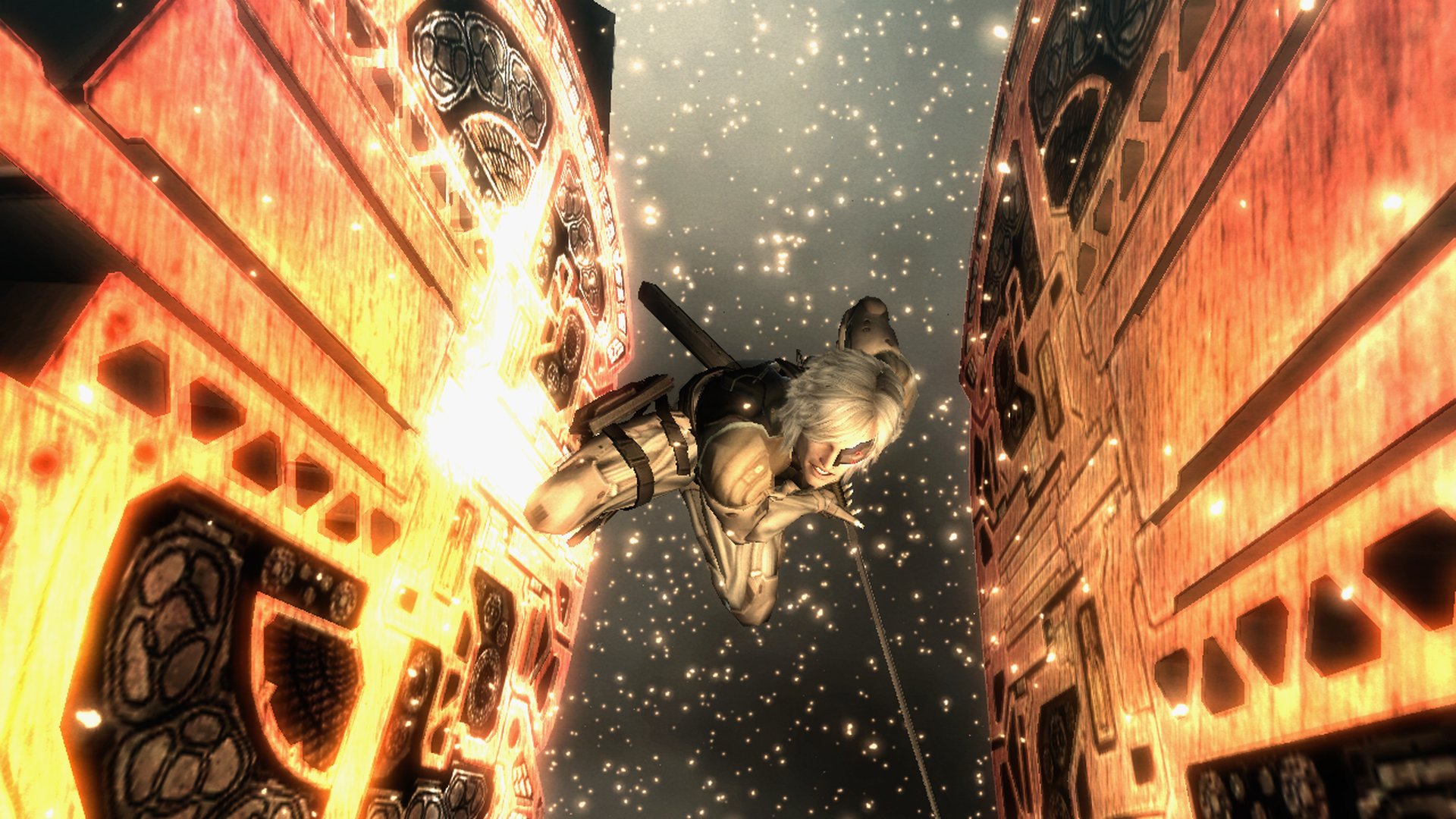
Taking place several years after Metal Gear Solid 4: The Guns of the Patriots, a cybernetic private military company known as Desperado is seeking to destabilize nations in order to keep tensions high. Everyone’s favorite fair-haired cyborg, Raiden, will face the Desperado cyborg assassin unit known as “The Winds of Destruction,” if he hopes to prevent a hot war from escalating.
The cast is filled out with a lot of colorful characters that have become enduring memes as time marched on. Blade Wolf is a character who undergoes a significant arc; beginning as a cold killing machine and becoming an understanding and emphatic loyal companion to Raiden.
Even characters with very brief appearances like Monsoon make a big impression thanks to his dialogue and unusual design. For a game with so many fun characters, they still all manage to get upstaged by Senator Armstrong, who might be the most enduring meme from the entire franchise.
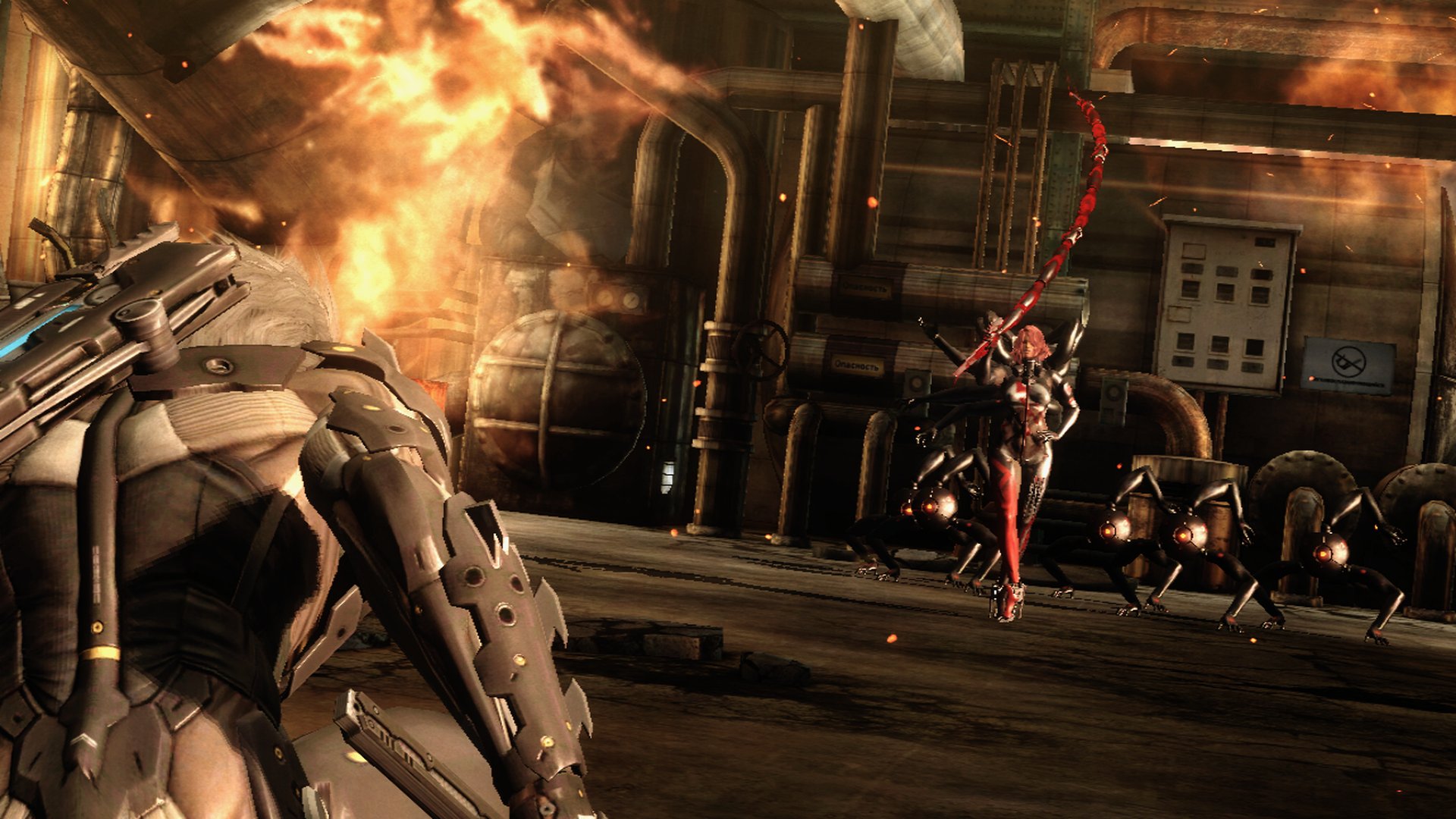
Everything about Armstrong is wonderful. He has a very understated design in a cast full of weirdo cyborgs. He’s balding, fights like a mix of a sumo wrestler with some moves of an American football player, and best of all; everything he says is weirdly agreeable. Even the heroic Raiden managed to agree with many of his points about “making America great again”.
Some people might even be tempted to put down the controller and let Senator Armstrong win the fight and consider the game won. You might have to turn off the volume when doing this, because Armstrong’s boss track is one of the greatest boss tracks ever composed for any game ever made, and just hearing it will get your blood pumping and itching for a huge showdown.
Every piece of music stands out as a whole, crowing Metal Gear Rising: Revengeance as the entry with the best soundtrack of the series. Not only is each boss track amazing listening on their own, the game has a dynamic soundtrack so that the action on screen will synchronize with the music to heighten the astonishing battles.
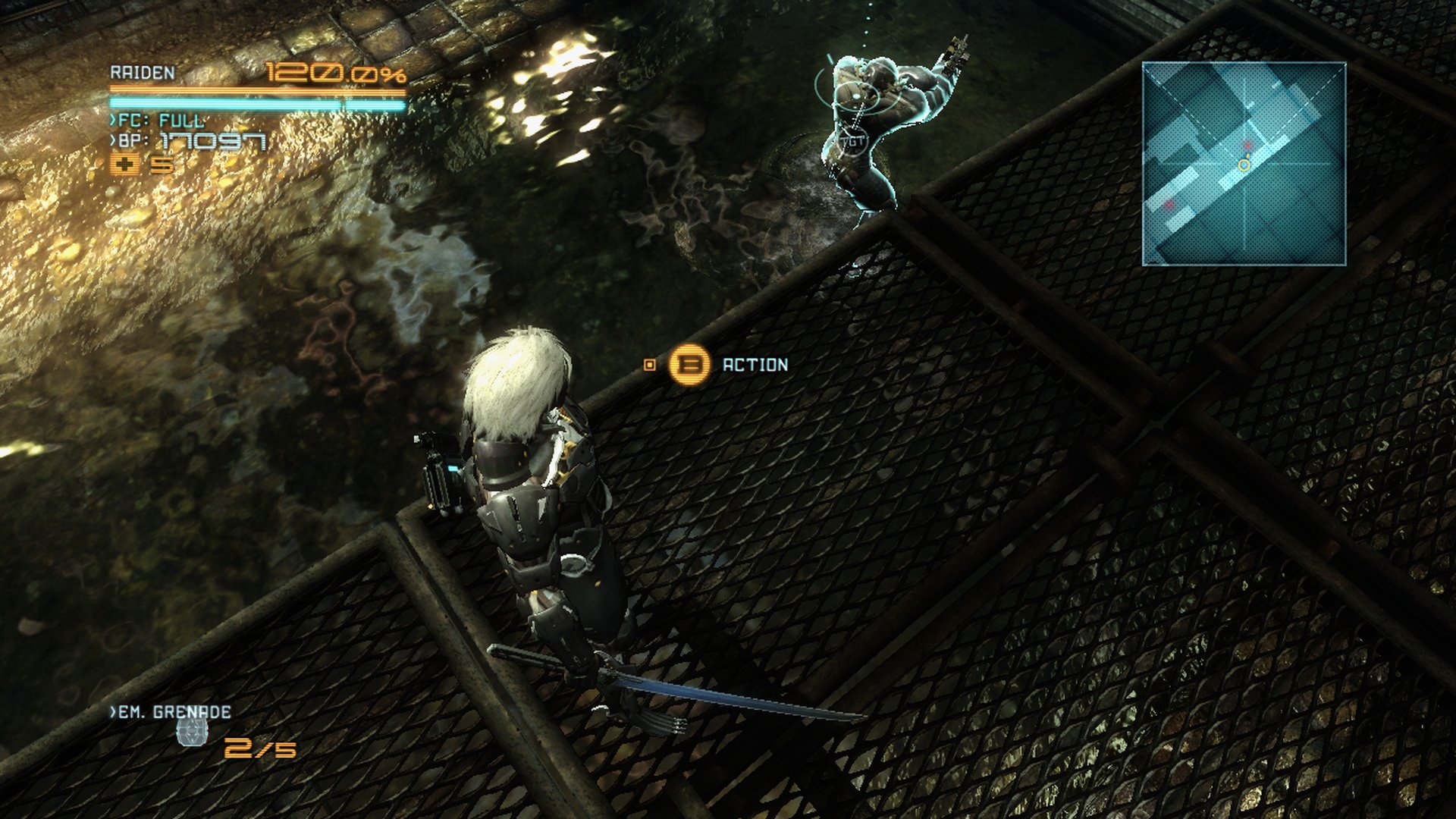
This kind of direction is such a stroke of genius, that every action game ever made should implement this feature. The lyrics, “TIME TO LEAVE THEM ALL BEHIND” kick off Blade Wolf’s final phase, intensifying the emotions and difficulty of the fight.
It is wonderfully over the top and flawlessly executed. Impressively, this effort has been applied to every boss battle in the game. This kind of feedback is rarely attempted, but in Metal Gear Rising: Revengeance, it proves to be extremely effective. It is one aspect where the developers did not cut any corners.
The overall feel of the combat and implementation of blade mode still feels as aggressive and stylish as ever. The parrying system was a risky design choice that ultimately paid off, and despite it sounding unreliable; the window of connecting a parry is very generous.
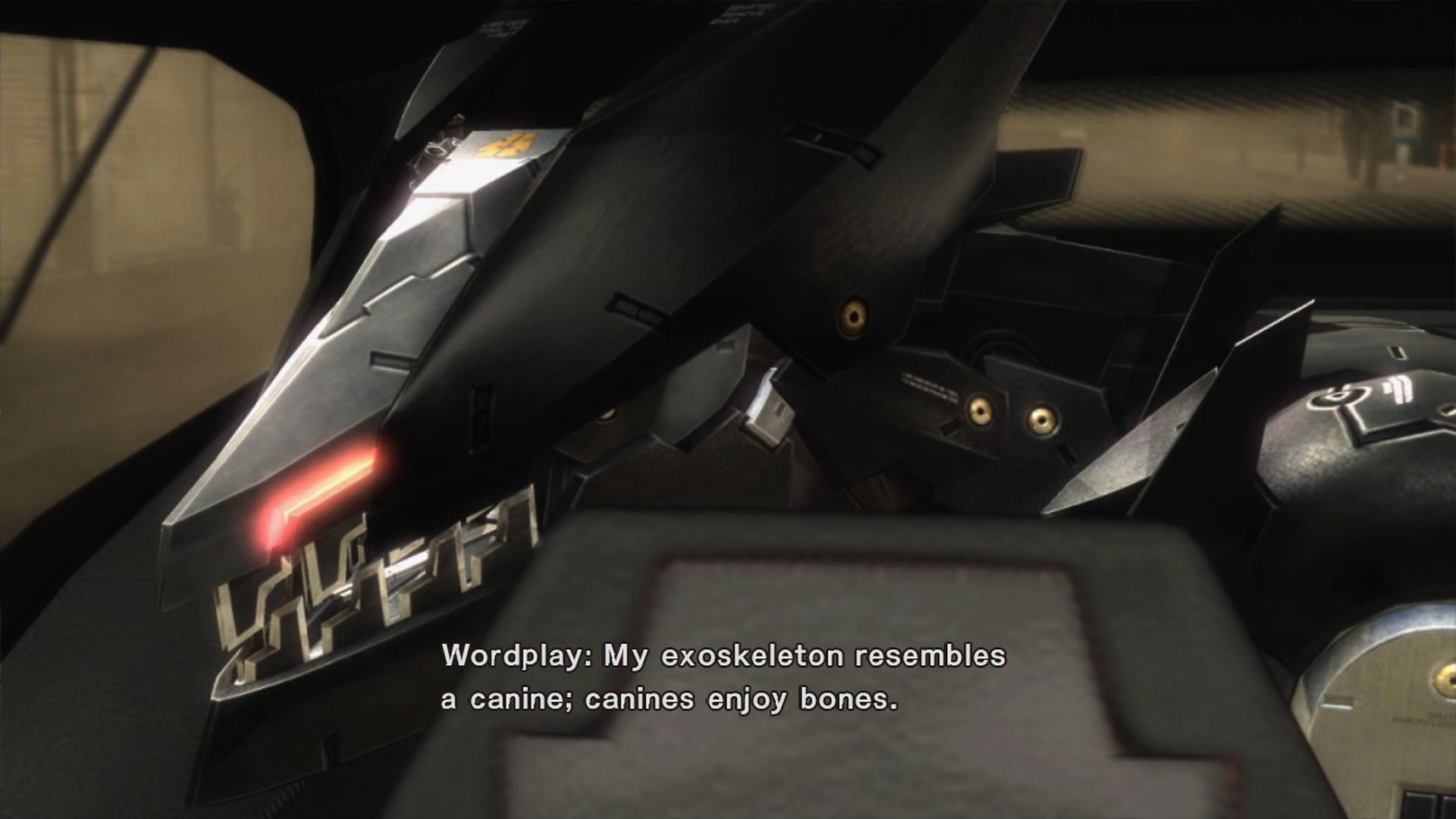
Raiden is so aggressive, he never dodges and only has either his parry or a side stepping attack that he can unlock. Admittedly it does take a little getting used to not having a traditional means of avoidance, after years of other video games conditioning us to accept certain inputs as a dodge. Like riding a bicycle, getting the hang of it means that it becomes second nature.
The way the parry is designed is to constantly keep Raiden on the offensive without him having to break his combo to block or dodge. It is probably why his side-step ability is also an attack; every move he makes keeps him connecting attacks in an aggressive manner.
Successfully executing a parry simply requires a nudge of the analogue stick in the direction of an enemy attack. This sometimes will also allow Raiden to perform deadly counter attacks which he can seamlessly switch to blade mode.
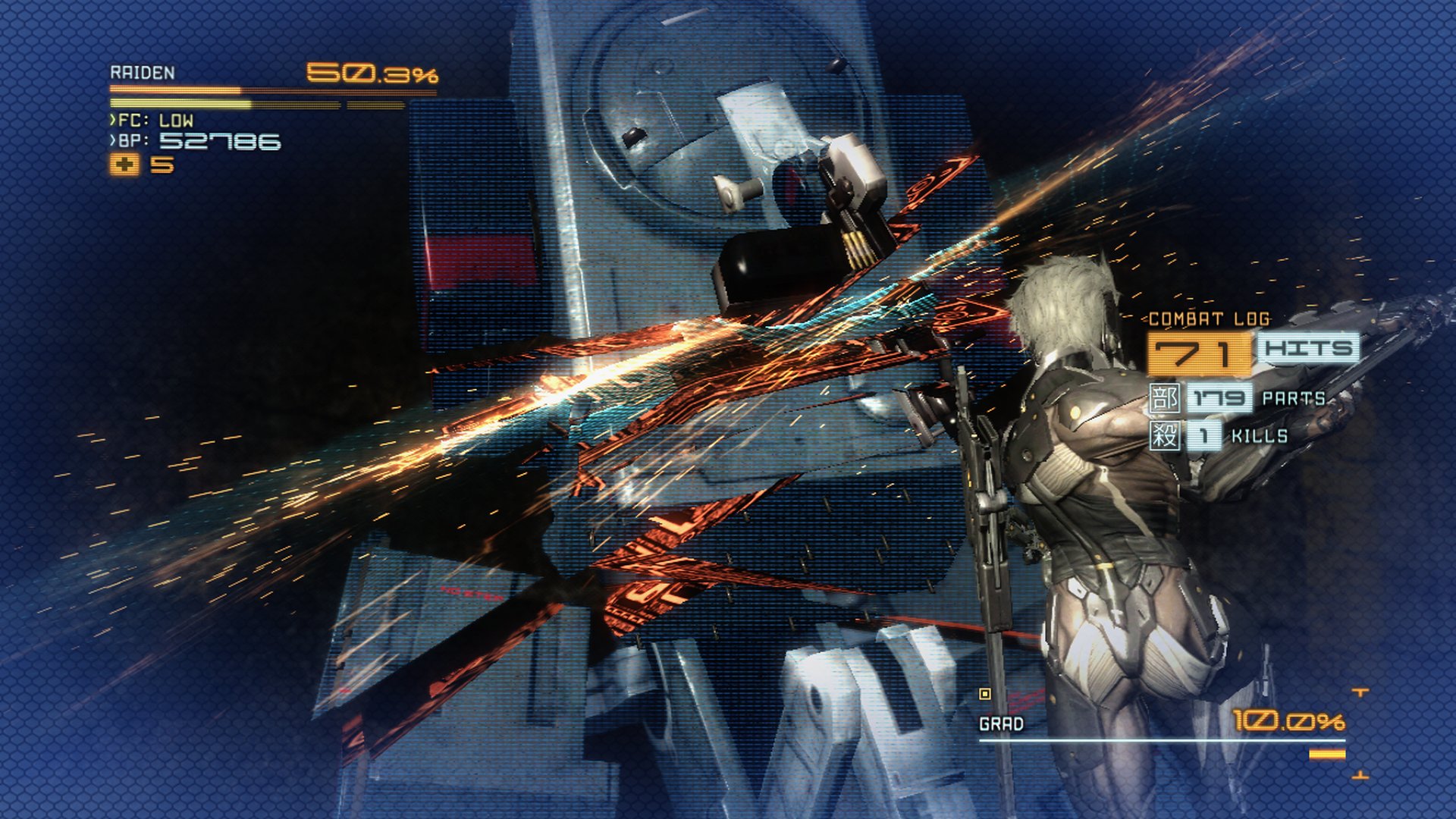
The free cutting blade mode and the patented “zandatsu,” or “cut and take” mechanic, is the core gameplay mechanic that defines Metal Gear Rising: Revengeance. All non-drone enemy types have a cyber spinal cord that Raiden can rip out from the stumps of their torsos for energy.
In order for Raiden to get to the juicy center of his targets, he will have to use kinetic energy to slow time down for him to accurately cut weak points that will expose a clean spine. A poorly aimed slice results in very basic item pick-ups that yield little restoration.
Getting the big points for buying upgrades or that fancy sombrero means having to avoid damage by mastering the parry and zandatsu-ing out perfectly carved out back bones. Pulling this off always looks incredible thanks to some impressive and quickly animated choreography; preventing it from getting stale or tedious.
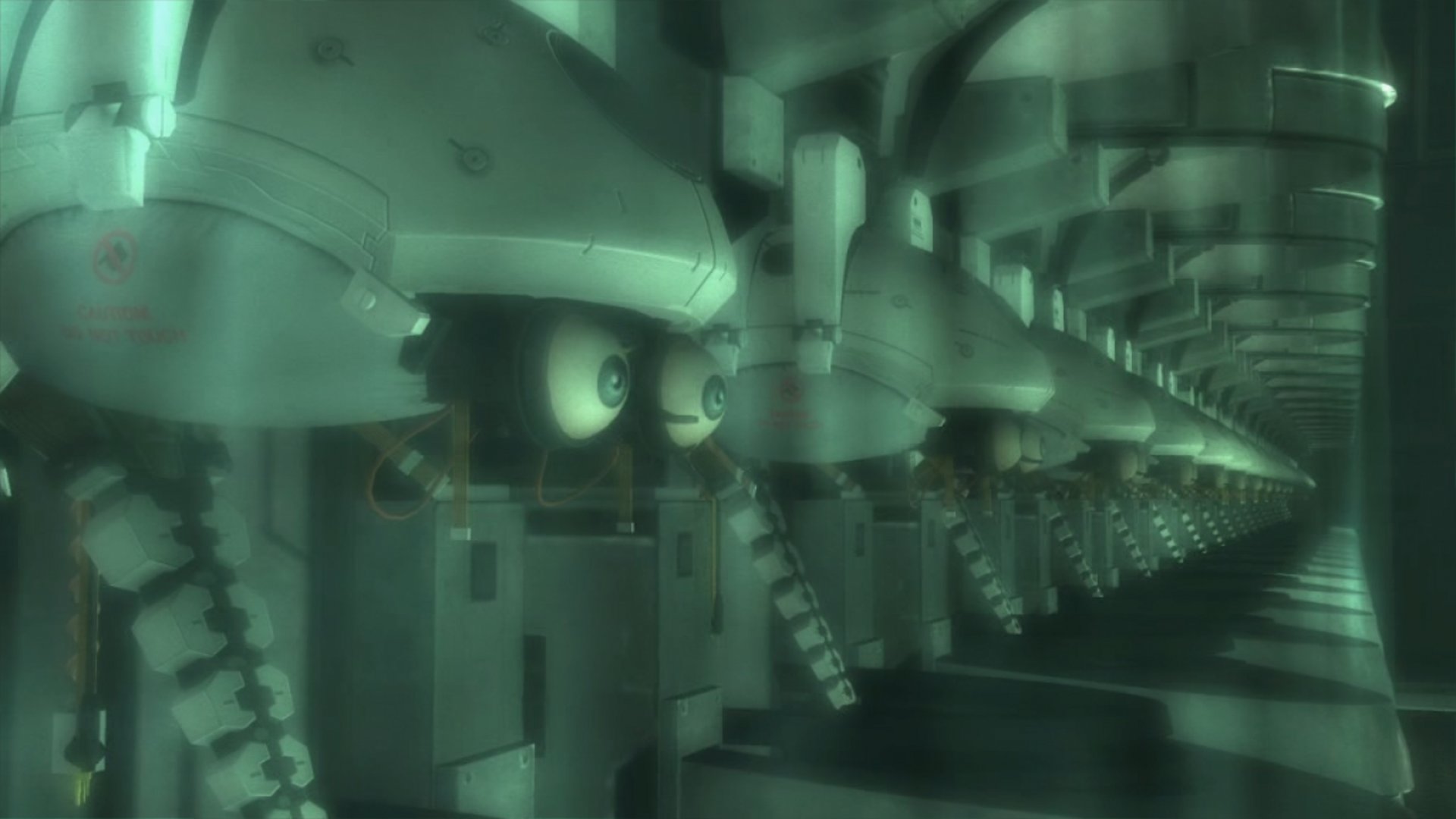
The cracks in Metal Gear Rising: Revengeance are a result of the game’s tight two-year development cycle. There are some gameplay elements that lack refinement; like the subweapon switching that requires Raiden to stand still, which is something he really should never do in a game with combat as fast as lighting.
The “ninja run” technique has a bit of jank to it when it comes to vaulting over the more vertical obstacles; making Raiden get stuck in a flipping animation. The overall presentation of the levels are very bare, and almost have no details in them. Geometry of the stages tends to be very limited, with almost no round edges to be found at all.
Most notably, the pacing of the chapters is nonsensical and inconsistent. Chapter one is a reasonable length; has a mid boss with Blade Wolf, and climaxes with a battle with Mistral. Chapter two is set in Mexico, but is wasted by having a majority of the time spent in a sewer that could be anywhere.
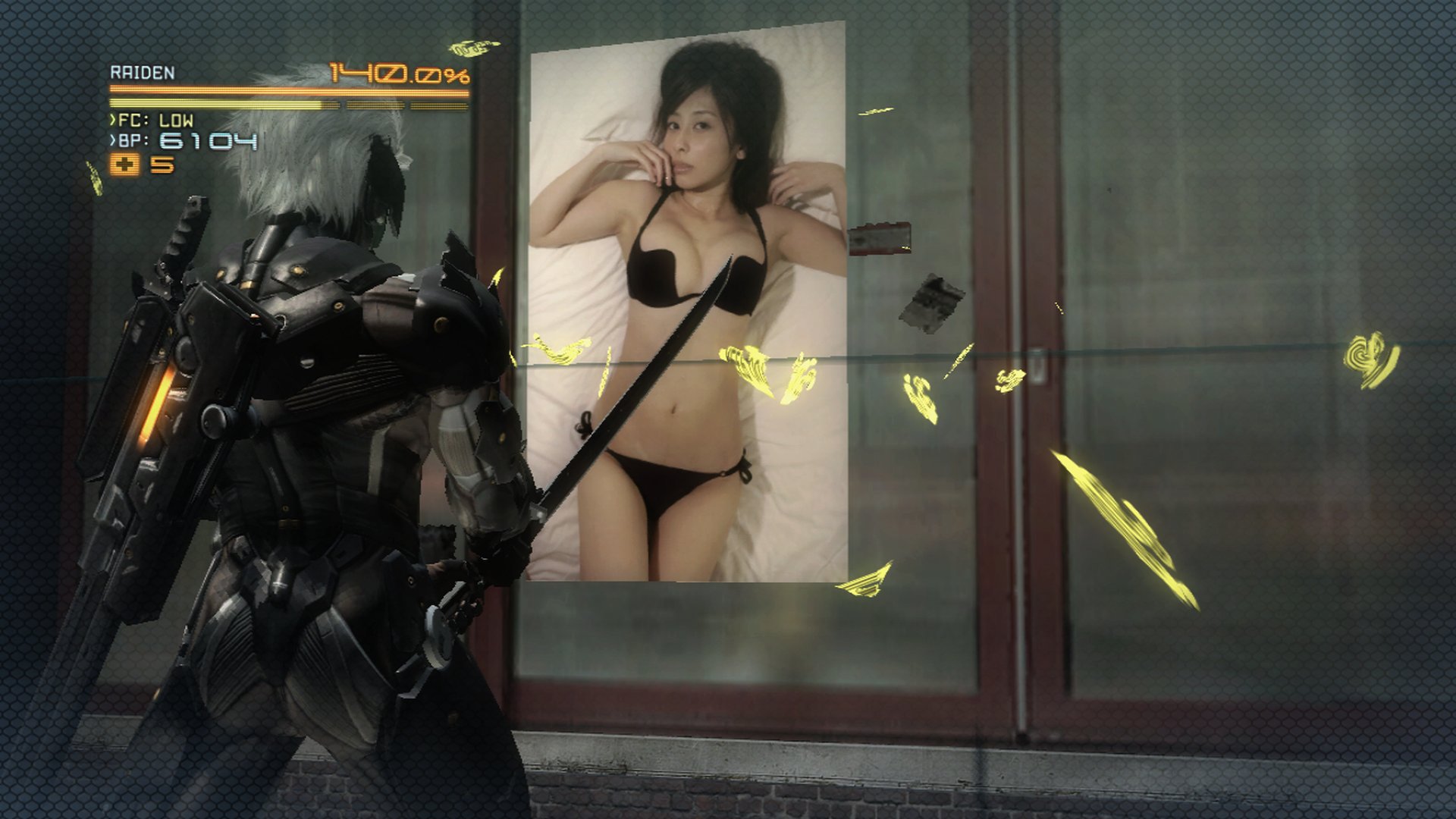
Chapter three is set in Colorado, and is the longest stage in the game. It ends with Monsoon’s showdown who puts the player’s parrying skill to the ultimate test. Chapter four is tied with the sewer for having the most dull and boring looking level, but has an excellent battle with Sundowner, but not before recycling Mistral and Monsoon.
Chapter six can barely be considered a chapter at all, and is just a fight with Jetstream Sam. Regretfully, Sam is built up to be one of the best fighters in the game, but when facing him there is nothing terribly remarkable about him. His encounter is forgettable, and this is proven by how nobody remembers him years later.
Chapter seven seems like it might have had big plans early in development, but there is almost nothing to the level itself. It is a large military base with only a few cyborgs in it, who barely pose a threat. It feels empty and unfinished. The only redeeming factor of this chapter is that it climaxes with the final battle with Senator Armstrong; the most entertaining character in the game.
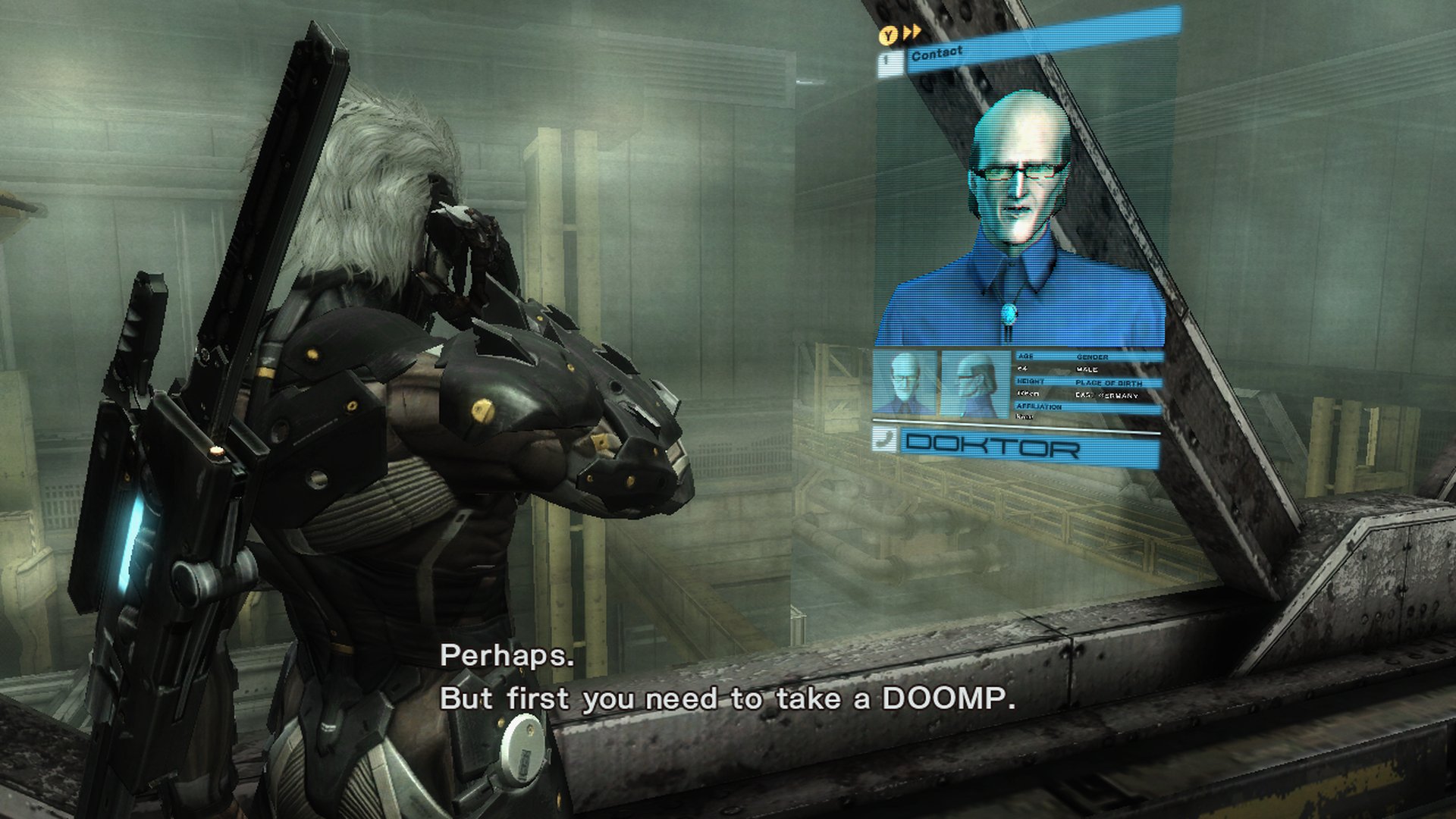
The boss weapons earned from beating them are the biggest indicator of a lack of rigorous plat testing. Sundowner’s enormous scissor machete looks so cool, but is so unenjoyable to use. It is extremely limiting in combat, and like the subweapons switching boss weapons around is slow and requires Raiden to stand still.
Monsoon’s sais also are cumbersome and are awkward to use. There is so little utility for it, that it may as well not exist. Mistral’s polearm fares better than the other boss weapons; it is fast and has a bit of reach, but it lacks the bite and satisfying feel of a katana.
These weapons are typically mapped to a secondary katana attack, which means equipping them locks out Raiden’s combo potential. The Battle Points can run scarce if you try to support all of these weapons, and it is just more efficient to focus on the katana since it is already the most versatile weapon in the game.
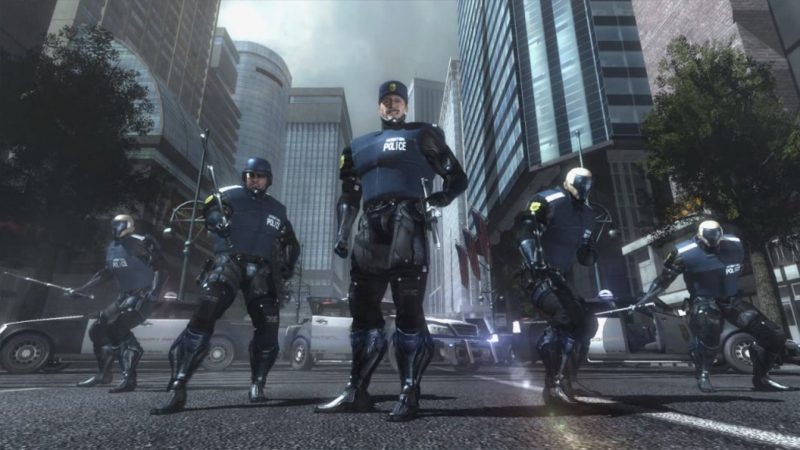
The bonus VR challenges seem suspiciously like scenarios designed for the main game, but could not be properly inserted into the core experience. Maybe this was not the case, but having to play the VR challenges is a chore due to the very slow and tedious starting animation sequence that can’t be skipped and has to replay for every retry.
Small annoyances like that is what prevents anyone from ever wanting to try to complete all the challenges. It’s a minor issue that compounds on itself, and should have been caught during play testing… Unless if there was no time to address it due to a looming deadline.
Metal Gear Rising: Revengeance is a short action game, even by action game standards. Thankfully, the boys at PlatinumGames cheekily ensured that this had high replay value. Maxing out all of Raiden’s stats, acquiring every technique, and getting all the cosmetic equipment will take many playthroughs across the many difficulty modes.
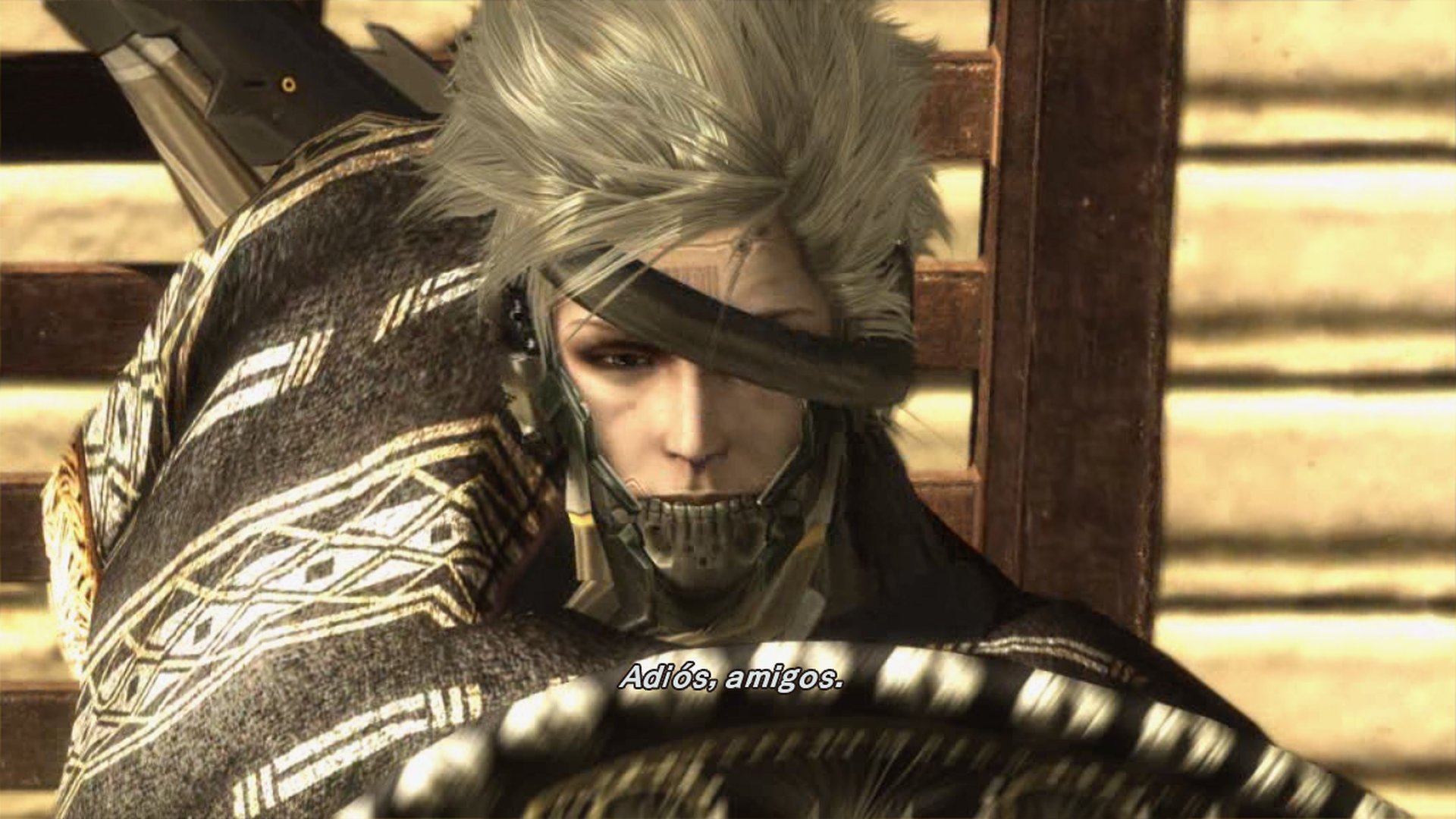
There is free DLC that allows the opportunity to play as Blade Wolf in his own stage and fight a new boss. He isn’t as fun as Raiden, and seems a bit unpolished. The DLC Jetstream Sam scenario is much more exciting, and has gameplay mechanics that make him almost better than Raiden. Much like Bayonetta, he is able to taunt enemies and make them more powerful.
These days, Metal Gear Rising: Revengeance can be found in most bargain bins across the world. Sadly, it never got a remaster and the likelihood of any HD treatment is remote due to Konami’s business practices. Playing it backwards compatible on a Series S does stabilize the frame rate to perfection, and eliminates load times; making it the best console version.
As time goes on, it is becoming less likely there will ever be a sequel to Metal Gear Rising: Revengeance. It does have some slight pacing issues towards the end, and useful abilities like the side-step shouldn’t be locked behind an ability store. As far as seventh gen action games go however; Metal Gear Rising: Revengeance was and still is one of the better options.
This Metal Gear Rising: Revengeance review was done on Xbox Series S using a personal copy. You can find additional information about Niche Gamer’s review/ethics policy here.